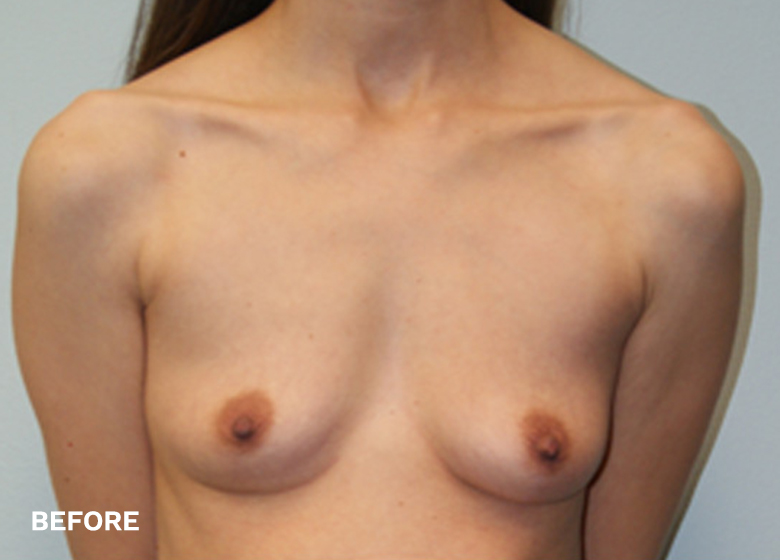The Details on Removing and Replacing Breast Implants
The majority of women who opt for breast augmentation are pleased with the changes they experience.
They feel good about themselves, their clothes fit better, and they have increased confidence.
Even so, there are times when removing and replacing breast implants may be recommended or even needed.
We’ll take a look at the reasons for breast removal and replacement, as well as what goes into the actual procedure.
Reasons for Removing and Replacing Breast Implants
As we said above, most women find that breast augmentation goes the distance in improving their lives.
There are times though where a woman may decide that she’s not satisfied with having implants and may just want them removed.
In other situations, women feel the implant size isn’t right – whether it be too large or too small. Or perhaps they want to switch from saline to silicone for a more realistic feel.
On occasion, breast augmentation complications can arise from the shape, size, texture, or positioning of the original implants.
And sometimes the problem is with the implant itself though. These include malposition, capsular contracture, implant leaking, implant rupture, or rippling of the implant.
In all of these cases, patients would opt for removal and replacement.
The Removal and Replacement Procedure
In order to get to the root of the problem, a board-certified surgeon schedules a consultation with the patient to perform a breast implant revision examination.
He or she then helps the patient determine which type of breast implants will be best. There are many factors that patients should consider when choosing breast implants.
- The Type of Implant
Patients who are unhappy with the results of their breast augmentation surgery may choose a different type of implant to garner better results.
The surgeon will discuss the benefits and risks of each type with the patient.
- The Texture of the Implant
Breast implants are available with smooth surfaces, round shape, or anatomic.
Smooth implants move more freely and are often used to replace textured implants that have rippled.
- The Size of the Implant
It’s not unusual for patients to choose an implant that’s too large then experience the complications that come from too large a breast implant such as over-stretching of the capsule, breast ligaments, and skin envelope.
The surgeon will recommend a size that will most complement your body shape and size to create a proportionate figure.
- The Cohesiveness of the Implant
There is a range of gel cohesiveness- or thickness and stickiness. Patients with capsular contracture may benefit from replacing with a higher cohesive gel.
Incision Options
The surgical procedure for replacing breast implants is essentially the same as the initial breast augmentation surgery.
The patient likely had one of the two common types of types of incisions for breast augmentation: periareolar and inframammary. There may also be a need to tighten the capsule and/or perform a simultaneous lift procedure.
Periareolar
This incision is made along the inferior border of the areola. The surgeon then inserts the implant in the breast pocket. This method offers excellent scar quality which is difficult to see after it heals at the junction between the pigmented areola and breast.
There is little risk of losing nipple sensation because the nerve to the nipple does not come through the skin. Instead, it travels along the ribcage and through the gland to the nipple. Breastfeeding should not be interrupted with any incision choice.
Inframammary
With this incision, the cut is made along the inframammary fold – which is the crease of skin underneath the breast. There is very little risk of losing nipple sensation with an inframammary incision.
In the case of both of these incision types, the surgeon will typically reuse the incision to remove and replace the implant.
Recovery after Removing and Replacing Breast Implants
To ensure no complications arise, patients are typically seen by the surgeon the day after the surgery.
Rest will be needed for 2-3 days following surgery. Then be prepared to take 3-5 days off from work and avoid any strenuous activity for 2-4 weeks.
Are You a Candidate for Breast Implant Removal and Replacement?
If you’re experiencing problems or just feel dissatisfied with your implants, contact us today.
It’s time to set up a consultation with one of our board-certified plastic surgeons to discuss your options for removing and replacing breast implants.
We’ll help you find comfort and restore your confidence.
Breast Implant Placement Options
Breast Implant Placement Options
Your breast implant placement will directly affect the final aesthetic results of your breast augmentation procedure. The board-certified breast surgeons at Star Plastic Surgery have found that submuscular placement is ideal for most of our patients. We understand that there is not a single solution for every body type, however, and will work closely with you to help you find the breast implant placement option that is most ideal for your needs.
Subglandular Breast Implant Placement
Subglandular placement means that the breast implants are placed just below your breast tissue, above the muscles in your chest. The primary advantage of this placement option is a shorter surgery. The disadvantages of subglandular placement include:
- Less aesthetically pleasing
- A more obviously enhanced appearance
- Not suitable for women with small breasts or low amounts of breast tissue
- May impede flow of breast milk
- May interfere with mammograms
Submuscular Breast Implant Placement
Submuscular breast implants are placed below the muscles in your chest. Some surgeons choose to place implants under one or two layers of muscle, but at Star Plastic Surgery, we have found placing the breast implant under three layers provides the best results. Deeper placement greatly reduces complications like capsular contracture, mammogram interference, and will not interfere with breastfeeding.
Additionally, this placement hides the breast implant under the muscles in your chest, reducing any evidence of breast augmentation, and providing you with a natural, aesthetically superior result.
The primary drawback to submuscular implant placement is a more involved surgical procedure. However, we have found that the benefits of this placement option far outweigh the slight inconvenience of additional surgical time.
At Star Plastic Surgery, we offer the Star Plastic Surgery Advantage. All of our breast augmentation surgeons are board-certified, use only proven surgical techniques, and are entirely devoted to the satisfaction of our patients. Our breast augmentation procedures are performed in accredited hospitals with highly trained staff, and our doctors are involved in your procedure from your initial consultation to your full recovery.
If you are considering breast augmentation contact us to schedule a free consultation to discuss the right breast implant placement for you with our experienced plastic surgeons.
Breast Implant Removal & Replacement
Breast Implant Removal & Replacement
There are a variety of reasons for removing and replacing breast implants, including switching from saline to silicone implants for a more realistic feel, replacing a ruptured implant, re-sizing the implants, relocating implants, or changes in weight that make the implant unnecessary. Our board certified surgeons will work to correct these issues to provide beautiful, natural-looking results.
Who is a Candidate for Breast Implant Removal & Replacement
The Breast Implant Removal & Replacement Procedure
Breast Implant Removal & Replacement Recovery
Contact Us
Breast Augmentation
Breast Augmentation
Your breast augmentation will result in a worry-free, natural, youthful look that should last a lifetime. If you find your breasts are not ideally shaped and sized to meet your frame, you may experience discomfort in a variety of professional and intimate situations. A breast augmentation can help you to feel more comfortable in your skin and help clothing to fit better, so you can wear the styles you want for a happier, more confident you!
When you come to Star Plastic Surgery, our board certified breast surgeons take the time necessary to fully assess your entire body. In this way, we can ensure your breast augmentation procedure produces a stunningly beautiful, natural look that complements your body’s silhouette.
Who Is a Candidate for Breast Augmentation?
Breast Implant Options
Incision Placement Options
Breast Augmentation Recovery
Contact Us Today

VIEW PHOTO GALLERY
Breast Augmentation FAQ
How long do results from breast augmentation surgery last?
How big can I make my breasts with breast augmentation surgery?
Will breast augmentation interfere with breastfeeding?
Will breast augmentation interfere with mammograms?
Is breast augmentation expensive?
Breast Augmentation Terminology Part 1 (A-K)
When considering getting work done on your breasts, you’re bound to experience some amount of breast augmentation terminology that may be unfamiliar to you.
No worries. Rather than pouring through the internet to find their meanings, we’re breaking down some of the terminology here.
Because there is a wealth of terms, we’ve tackled the first half of the alphabet here and will address the second half in our next post.
Breast Augmentation Terminology (A-K)
We won’t get too deep in the weeds on the terminology so as not to overwhelm you. And some if not many of these terms won’t apply to you. But if you like to go in knowing all the details, here is a sampling of some of the terms you may hear.
Augmentation Mastopexy
Augmentation mastopexy is really just a ‘doctorly’ way of saying breast augmentation with a lift. This is often the recommended procedure for patients who are struggling with breast sagging because of weight loss, aging, or childbearing. It’s designed to lift drooping breast tissues while adding fullness especially in the upper breast.
Breast Capsule
Any time the human body experiences a foreign body, it responds by creating a protective capsule of collagen around it. The breast capsule is what forms around breast implants. It’s completely normal and a healthy part of the healing process. It also helps to keep the implants in place.
Cooper’s Ligaments
Within the breast there is connective tissue that provides support and structure. The Cooper’s ligaments run from the clavicle to the interior part of the pectoralis major muscle before branching throughout the breast tissue.
Drop and Fluff
“Drop and fluff” may sound like a laundry term, but it actually describes the way a breast implant settles after breast augmentation surgery. Immediately after surgery, breast implants sit high on the chest as the muscles in the chest tighten to adjust to their presence. As healing proceeds, the muscles relax and the implants drop to a more natural position. From there, they fluff, as it were to fill the lower breast cavity.
Gummy Bear Breast Implants
As silicone breast implants continue to improve, they’re becoming highly cohesive. Compared to their earlier silicone counterparts, they are firm yet flexible – like the consistency of a gummy bear. They also retain their natural look and feel even as they age.
Implant Rippling
Implant rippling is just like it sounds. Rippling of the implant becomes visible through the skin at the outer perimeter of the implant. This is usually along the outer edge toward the arm pit. It can occur with either saline or silicone implants, but is more prominent in round saline implants. It is also most common among women who are very thin or who have little natural breath tissue.
Keller Funnel
If you’re wondering how a Keller Funnel works, think about a piping bag as one would use in baking. In this case though, the breast implant is placed in the large end of a sterilized and hydrated bag, while the narrow end is inserted into the incision on the patient. The breast implant is then gently ‘piped’ into the surgical pocket.
Are You Considering Breast Augmentation Surgery?
Having awareness of breast augmentation terminology can give you more peace of mind as you consider surgery.
So if you’re thinking about getting breast augmentation, contact us today. During your free consultation, we’ll walk you through the process and answer any other questions you might have.
That way you’ll go in reassured and confident about the whole procedure.














